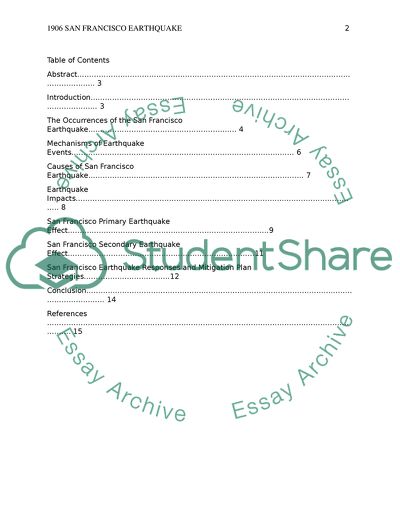Cite this document
(The Occurrences of the San Francisco Earthquake Research Paper, n.d.)
The Occurrences of the San Francisco Earthquake Research Paper. Retrieved from https://studentshare.org/environmental-studies/1871384-what-are-the-occurrences-of-earthquakes-why-they-happen-and-what-are-the-effects-from-earthquakes
The Occurrences of the San Francisco Earthquake Research Paper. Retrieved from https://studentshare.org/environmental-studies/1871384-what-are-the-occurrences-of-earthquakes-why-they-happen-and-what-are-the-effects-from-earthquakes
(The Occurrences of the San Francisco Earthquake Research Paper)
The Occurrences of the San Francisco Earthquake Research Paper. https://studentshare.org/environmental-studies/1871384-what-are-the-occurrences-of-earthquakes-why-they-happen-and-what-are-the-effects-from-earthquakes.
The Occurrences of the San Francisco Earthquake Research Paper. https://studentshare.org/environmental-studies/1871384-what-are-the-occurrences-of-earthquakes-why-they-happen-and-what-are-the-effects-from-earthquakes.
“The Occurrences of the San Francisco Earthquake Research Paper”, n.d. https://studentshare.org/environmental-studies/1871384-what-are-the-occurrences-of-earthquakes-why-they-happen-and-what-are-the-effects-from-earthquakes.


